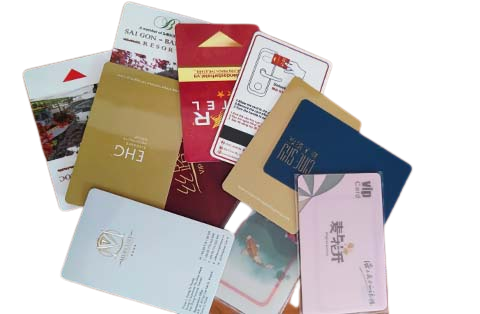How RFID Cards Can Boost Your Business in 2024 ?
As we enter a new year, many of us are hoping for a better future for our businesses. The COVID-19 pandemic has brought unprecedented challenges and uncertainties, but also opportunities and innovations. One of the technologies that can help us overcome the difficulties and improve our efficiency and profitability is RFID (Radio Frequency Identification).

RFID is a technology that uses radio waves to identify and track objects, such as products, assets, or people. RFID cards are a type of RFID tag that can be embedded in plastic cards, such as ID cards, access cards, or payment cards. RFID cards can store and transmit data wirelessly to RFID readers, which can then process and store the information in a database or a cloud system.
There are different types of RFID cards, depending on the frequency, power source, and functionality. In this article, we will introduce some of the most common RFID cards and how they can benefit your business.
Active RFID Card
An active RFID card is a card that has a battery and a transmitter inside. It can send its own signal to the reader, without relying on the reader's energy. This makes it suitable for long-range and high-speed applications, such as tolling, asset tracking, or real-time location systems. An active RFID card can operate at different frequencies, such as low frequency (LF), high frequency (HF), or ultra-high frequency (UHF).
Passive RFID Card
A passive RFID card is a card that has no battery and relies on the reader's energy to power up and communicate. It is cheaper and smaller than an active RFID card, but has a shorter read range and slower read speed. A passive RFID card can also operate at different frequencies, such as LF, HF, or UHF.
Smart Card Frequency
A smart card frequency is the frequency band that a smart card uses to communicate with the reader. Different frequencies have different advantages and disadvantages, such as read range, data transfer rate, interference, and cost. For example, LF cards have a low read range (up to 10 cm) and a low data transfer rate, but are less prone to interference and are cheaper. HF cards have a medium read range (up to 1 m) and a medium data transfer rate, but are more sensitive to interference and are more expensive. UHF cards have a high read range (up to 15 m) and a high data transfer rate, but are very susceptible to interference and are the most expensive.
UHF RFID Smart Card
A UHF RFID smart card is a smart card that operates at the UHF frequency band (860-960 MHz). It is a type of passive RFID card that can store and process data, such as encryption, authentication, or memory management. A UHF RFID smart card can be used for applications that require a long read range and a fast data transfer rate, such as inventory management, logistics, or access control.
13.56MHz RFID Card
A 13.56MHz RFID card is a smart card that operates at the HF frequency band (13.56 MHz). It is a type of passive RFID card that can store and process data, such as encryption, authentication, or memory management. A 13.56MHz RFID card can be used for applications that require a medium read range and a medium data transfer rate, such as payment, ticketing, or data transfer.
 125KHz RFID Card
125KHz RFID Card
A 125KHz RFID card is a simple card that operates at the LF frequency band (125 KHz). It is a type of passive RFID card that can only store a unique identification number (UID) or a simple key. A 125KHz RFID card can be used for applications that require a low read range and a low data transfer rate, such as access control, identification, or security.
Conclusion
RFID cards are a versatile and powerful technology that can help you improve your business performance and customer satisfaction. By choosing the right type of RFID card and frequency for your specific needs, you can enjoy the benefits of RFID, such as convenience, security, accuracy, and efficiency. Hopefully, this year, your business will get better with RFID cards.

